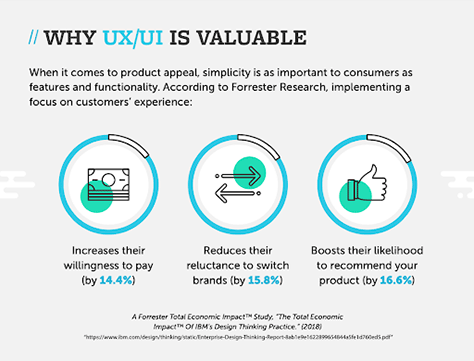With time, the crux of SEO algorithms has advanced. Today, SEO is not just about keywords stuffed into the content here and there. Instead, it caters to so many other factors like user experience or UX.
Search engines are starting to prioritize those websites that are investing more effort in originally providing a better UX!
So, your ultimate goal should be launching a well-designed website with an attractive interface that is easy to navigate and provides a seamless experience for the users. This will instigate them to stay on the site for longer hours, and hence, it will improve your SEO rankings! Furthermore, people nowadays usually connect with a Digital marketing agency to get an overall clarity on how SEO will help their brand or any business to grow in this era of digitalization.
In this blog post, we will be revealing more about the importance of UX for Search Engine Optimization.
Decoding the Connection Between UX and SEO
Nowadays, Google is using AI algorithms to understand how long users are staying on a website. If the user stays on your site for longer hours, the algorithms will be able to see that your website has been successful in solving the users’ problems. The crawlers rank those sites at the highest indexes, which adds value to the users’ lives.
Now, to understand the extent of the connection between UX and SEO, Baymard Institute conducted research for e-commerce stores. It was realized that the users were facing several issues like a complicated account creation process, slow response times, long checkout process, and many more. It is predicted that solving these issues and optimizing the checkout procedure can lead to a 35% increase in client conversion rates!
Moreover, they also concluded that any SEO agency in Bangalore or brand should allocate at least 10% of the project budget to UX so that it can help boost the SEO rankings in the upcoming days.
Before proceeding in deep, you as a brand should acknowledge the below UX factors that impact the rankings on search engines.
The proper site architecture is the key to the smooth navigation of both the search engines and the users of your website. Structure pages into well-defined categories, keep a simple menu, and reduce click depth to guarantee that each page can be found within a few clicks from the homepage.
Layout and Design
A properly designed layout is the key to user understanding and determines their behavior. Organize the content with clear headings, using the hierarchy correctly. Graphics should align with your brand theme and have optimized alt tags for better UX.
Page Speed and Core Web Vitals
The page load time is the key factor that influences user satisfaction and SEO rankings. Try to achieve a load time of less than 2. 5 seconds and concentrate on Core Web Vitals metrics such as first screen loading, ease of interaction, and visual stability. Tools such as Google PageSpeed Insights and SE Ranking’s Website Audit can be used to monitor and enhance performance.
Mobile-First Indexing and Responsiveness
Because mobile devices are the main source of web traffic, mobile optimization is a must. Make your website responsive to different screen sizes, with clear and readable content and properly arranged elements. The common mobile UX issues like the cramped tappable elements and the inadequate keyboard layouts should be addressed for better user experiences.
UX and Conversion Optimization
User Experience is the key factor that determines the conversion rates. A design that is easy to use with clear CTAs and fast loading speeds makes visitors take the desired actions. The fusion of UX and conversion optimization results in a smooth customer journey, which, in turn, leads to an increase in conversions and an enhancement of SEO performance.
Prominent UX metrics to track for SEO
Let’s learn the main UX metrics which anycompany mainly uses to track the SEO rankings:
- Dwell Time: Analyze how many hours users spend on your page, which indicates their content relevance and satisfaction levels.
- Bounce Rate:Thus, you can hence, determine the percentage of the users who exit your site without any other interaction, which will be a sign of the quality of the content and the website navigation.
- Average Engagement Time:The speed of the users to come to your website is the indicator of their active participation. Hence, the factor is the user’s liking and the communication that they have with your web page. Thus, it is an indicator of the level of interest and interaction users have with your webpage.
- Core Web Vitals (CWV): The main performance indicators introduced by Google to measure aspects such as loading speed, visual stability, and interaction responsiveness, which, in turn, affect the user experience and SEO.
Categorization of UX – The 3 Classified Categories
If we see intricately, UX can be classified into three broad categories:
- Information: Companies should focus on the information presented on any site and how this information is organized here. The site architecture should be easy to navigate.
- Interaction: Secondly, you should focus on all the interaction elements, like buttons, forms, etc., through which clients can interact with your site.
- Visual Design: Thirdly, focus on the look and feel of the website. It should have balanced typography, colors, and themes and should be responsive to mobile devices for better UX.
UI vs UX: The Core Differentiative Idea
UI (User Interface):
– It helps to enhance the overall look, design, and feel of a product.
– Attentive to visual elements and interactive design.
UX (User Experience):
– The sentence is about the users’ total experience.
– It is about usability, accessibility, and user satisfaction.
Pro Tip: The UI is about the product’s look, while the UX is about the complete user journey, including emotions and interactions that are taken into account to create a smooth experience. UX will help your ranking system to grow on the search engine index.
Wrapping it up at the end! – Build a great User Experience to stand at the top of the search enginesTo sum up, the development of SEO algorithms shows the importance of user experience (UX) in the ranking of websites. Through the UX, you not only increase user satisfaction but also tell the search engines the benefit your site has.
The UX issues, such as intuitive navigation, fast load times, and mobile responsiveness, directly affect the SEO performance. The knowledge and application of UX metrics such as dwell time and bounce rate are very important for the increase of organic traffic and the improvement of conversion rates.
The integration of UX into your SEO plan is a must if you want to achieve long-term success in the digital world.



